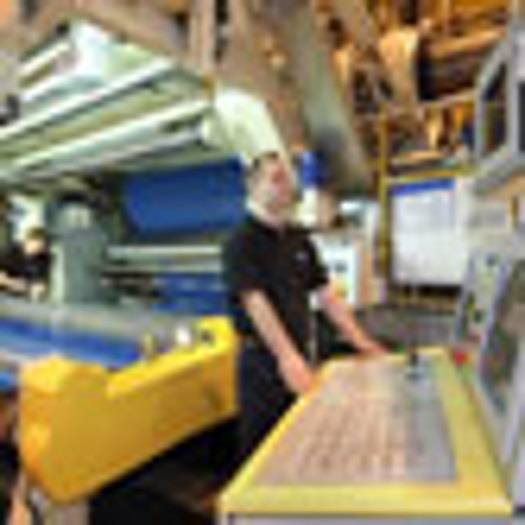To say that the print industry is having it tough at the moment would be an understatement. And few sectors have had it so tough as the offset market, where printers are putting off big investments, such as splashing out on a new press, until business picks up. The knock-on effect for the blankets market has been significant. Bob Whitney national blanket technology manager for Manroland Consumables paints a grim picture.
"It has been quite desperate in the past nine months. Customers have been even more focused on price rather than quality," he says.
The consumables sector is feeling the pinch of print cutbacks, but Stephen Hannon, managing director at print equipment supplier Böttcher UK, says that forward-thinking printers should adopt a different mindset because investing in better-quality blankets could help printers get more out of their prized half-million-pound press.
"In reality a well-specified product that has the best balance of price and performance will actually cost the printer a lot less in the mid-term," he says. "This is due to more controlled and faster start ups with less sheet waste, while reducing the frequency of unexpected press stops for blanket washes or blanket changes."
While there are only around 13 companies that manufacture blankets, the number of companies selling them is more than twice that. Deals are often made with blankets bundled together with inks and other consumables. But Hannon warns that the phrase ‘penny wise, pound foolish' has never been so relevant.
Protecting investments
Having made an investment in high-quality blankets, proper care and attention must be taken when installing and maintaining them. "It's most important that you fit them correctly to the machine specification," warns Whitney.
"Manufacturers advocate a good torque when tensioning the blankets. If it's a compressible blanket make sure it's packed correctly and check the blanket height." Improper packing can aggravate problems with dot gain, poor register and slurring.
"The effective face of the blanket, the elastomer covering, can be as sensitive to certain contact media so make sure that inks, founts and washes will be best suited to the blanket surface," says Hannon. "This is the surface that provides the final film ink split that creates the printed image and this is what the printer is selling."
In terms of research and development, manufacturers are focusing on innovation to improve their blankets' environmental performance. Conventional printing blankets are made from rubber, and are therefore derived from petroleum, so efforts are being made to find a biodegradable alternative while new product launches are also likely to incorporate no-pack blankets.
WHAT'S NEW IN OFFSET BLANKETS
? Böttcher has launched its DuoTec range of printing blankets: the Duo7200 and the Duo7400. The 7200 has a hydrophilic surface, which is ideally suited to IPA-free printing, and the blanket construction is based around two microsphere compressible layers. The 7400 has a traditional surface and uses dual-compressible layer technology combining microspheres and compressible voids
? Trelleborg is launching a no-pack blanket for printers at Ipex 2010. The manufacturer completed its acquisition of MacDermid’s offset printing blanket business last year
? In August, ContiTech Elastomer Coatings drew up a carbon footprint for its printing blankets. According to the analysis carried out by the University of East Westphalia-Lippe, the production of ContiTech’s printing blankets generates 70% less climatically detrimental CO2 emissions compared to world standard printing blankets










